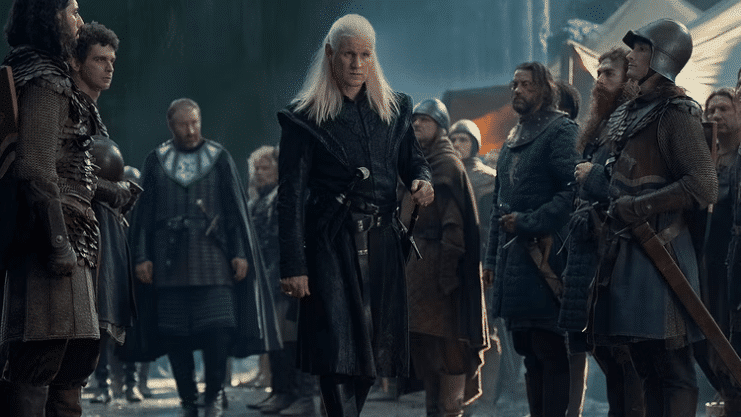
The long-awaited conclusion of House of the Dragon season 2 has set the stage for future seasons, but will it live up to fans’ expectations?
The fans of series They followed the development of the second season with great anticipation. The promise of exciting battles and high-tension moments was palpable in every episode, and the Season finale it was not an exception. However, despite the expectations generated by the trailers, the final episode left a feeling of dissatisfaction among many viewers.

Where are the epic battles?
One of the major sticking points towards the end of the second season is the lack of action. While the trailer suggested bloody battles, the reality was different. The long-awaited Battle of the Gulf was postponed, and Aemond’s (Ewan Mitchell) burning of Sharp Point was barely shown on screen. Instead of battles, the episode focused on the strengthening of alliances, both green and black, and Daemon’s (Matt Smith) vision of Harrenhal, which contributed to a slower narrative.
“The lack of direct conflict and focus on elongated subplots slowed the series’ narrative momentum, in stark contrast to the first season.”comments one critic. This has been a constant in this second installment, where the dramatic clashes have been overshadowed by prolonged subplots and a slow pace.
A promise not kept
Unlike the beginning of the series, which suffered rapid time jumps and accelerated plots, season two opted for a more methodical narrative. This choice allowed for the development of previously neglected characters, such as Daeron, Alicent’s third son. However, the over-reliance on politics and family drama made the season less exciting.
Rhaenyra (Emma D’Arcy), for example, had a slow and deliberate response to Aemond’s murder of Lucerys, which diluted the central conflict of the Dance of the Dragons. While the battle of Rook’s Rest offered an impressive spectacle, key characters like Daemon were relegated to the background, losing their fighting essence.

The lack of resolution
The final episode feels more like a prelude to what’s to come in season three than a satisfying conclusion to the storylines that began. The inclusion of characters like Sharako Lohar and the new dragon Tessarion feels more like a tactic to keep viewers on the edge of their seats than a resolution to the conflicts that have arisen.
“The final scene with armies marching from all corners of Westeros establishes the scope of the conflict to come, but the fact that none of these clashes materialize in season two underscores how frustrating the narrative structure can be.”says an analyst.
The good and the bad of the ending
Despite these criticisms, the season finale also had its highlights. THE cinematography It was impressive, and Rhaenyra’s encounters with Alicent and Daemon brought emotional depth to the series. These moments demonstrate that, despite the slower pace, the series can offer considerable narrative richness if it can balance the urgency of the first season with the depth of the second.
“The real challenge for House of the Dragon will be finding a balance between the fast pace of the first season and the more detailed narrative of the second.”suggests a TV series expert. This will be essential to keep viewers interested in the upcoming seasons.
While the end of season two left some storylines open and a sense of anticipation for what’s to come, it’s clear that the series needs to adjust its narrative pacing to fully satisfy its fans. The promise of an impending war is in the air, and fans are eagerly waiting to see how it all plays out in the next season.
The Evolution of the Dragon House
The journey of the series from its inception to today has been one of adjustments and changes. The shift from a fast and fragmented narrative to a slower and more meticulous one has generated mixed opinions among fans. This change in pace is both an opportunity and a challenge for the creators of the series.

As we await season three, it’s important to acknowledge how the series has evolved in its approach and what elements have worked best. The key to the series’ future success lies in finding that delicate balance between action and character development, between conflict and resolution.
The creators are tasked with meeting the high expectations of fans, who want to see a rich and emotional narrative that captures the essence of the Westeros universe. With dragons ready to fly and armies on the march, the stage is set for a season that could define the series’ legacy.
The series is available to watch on Max.